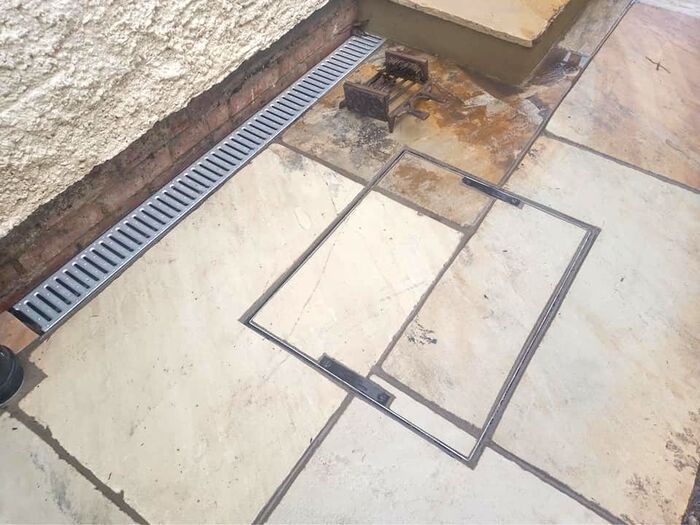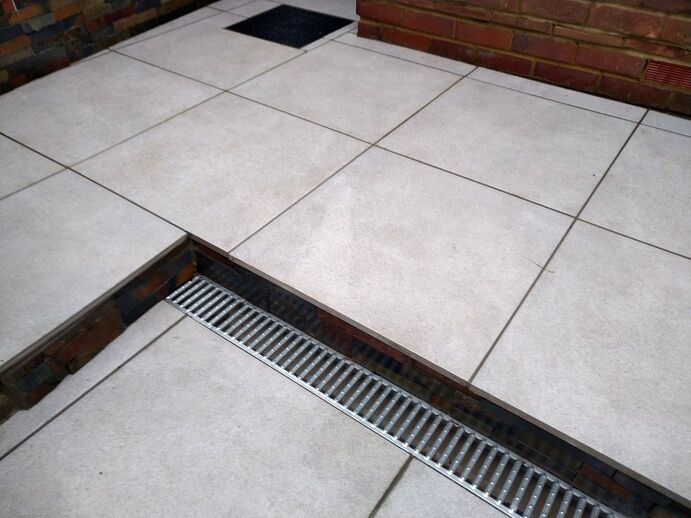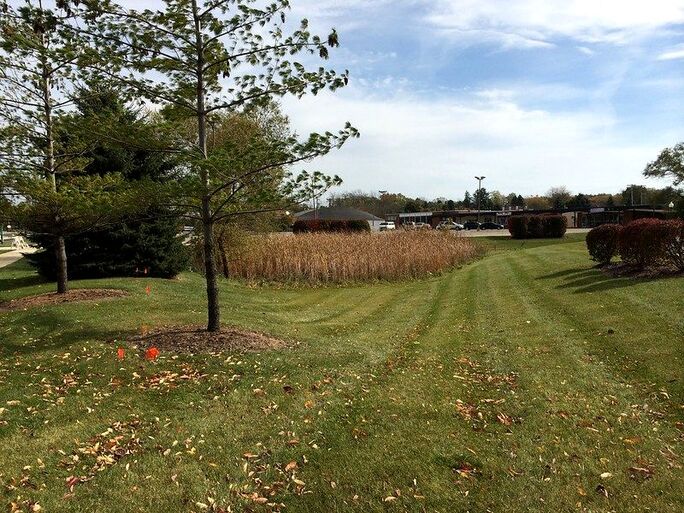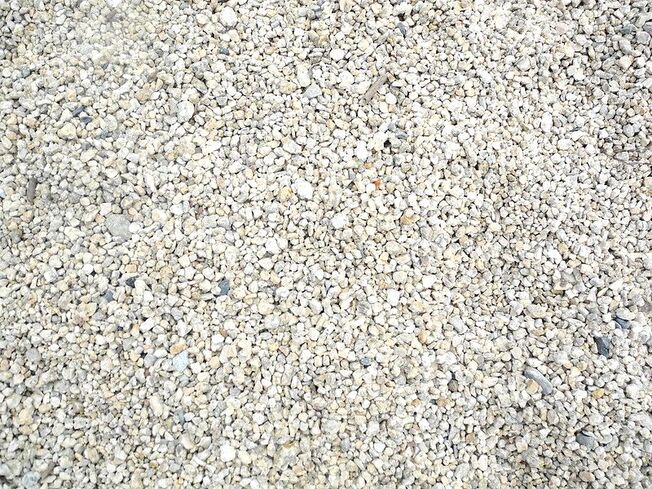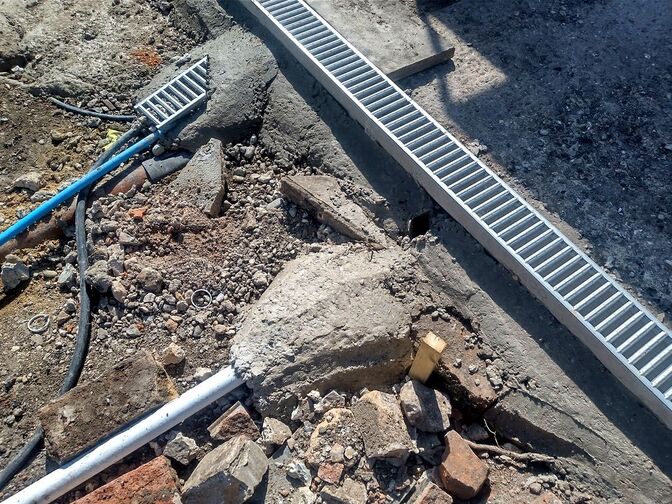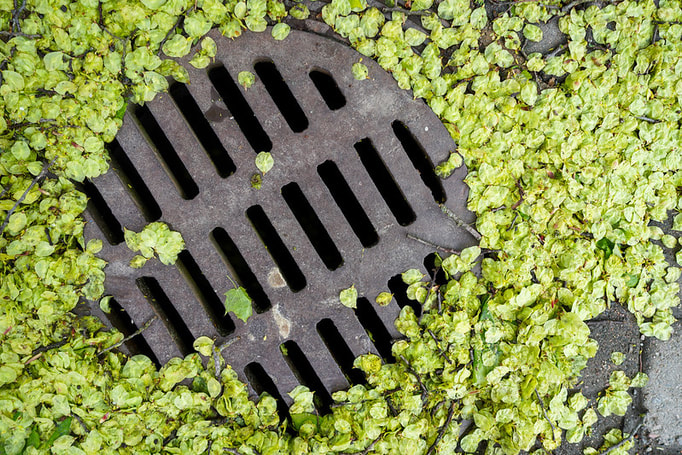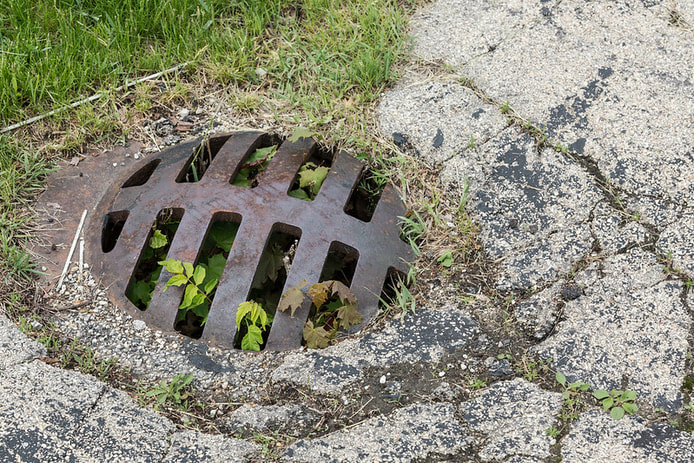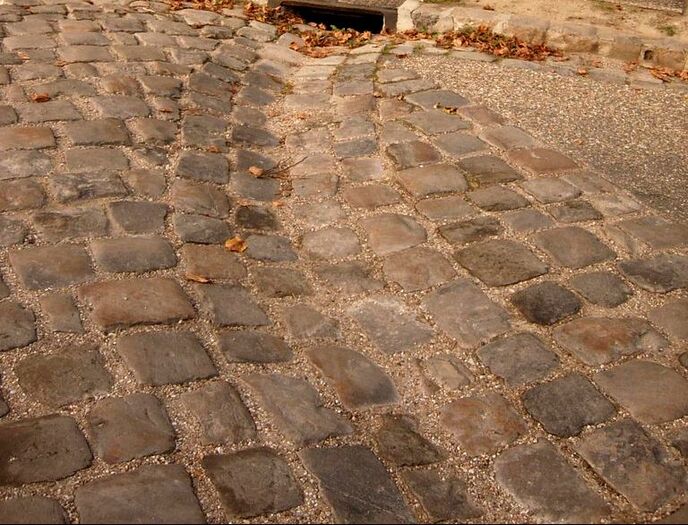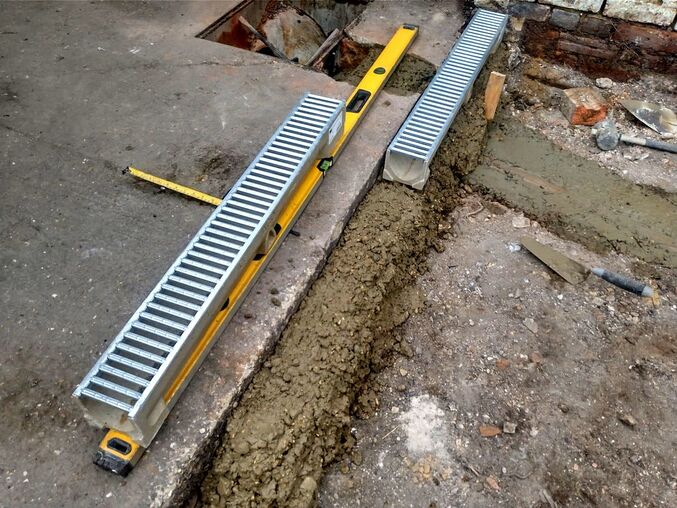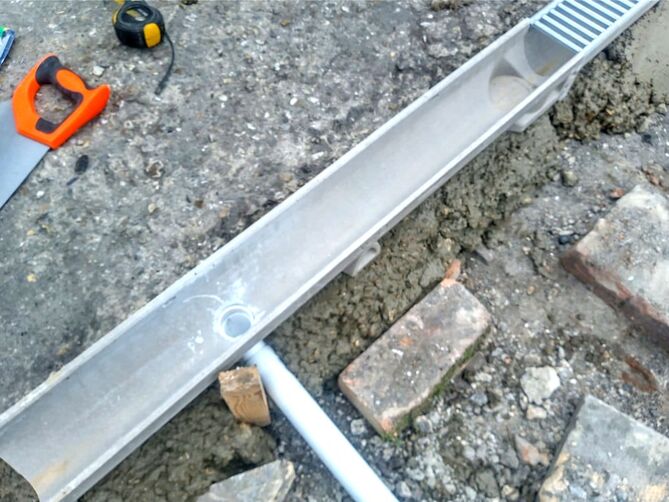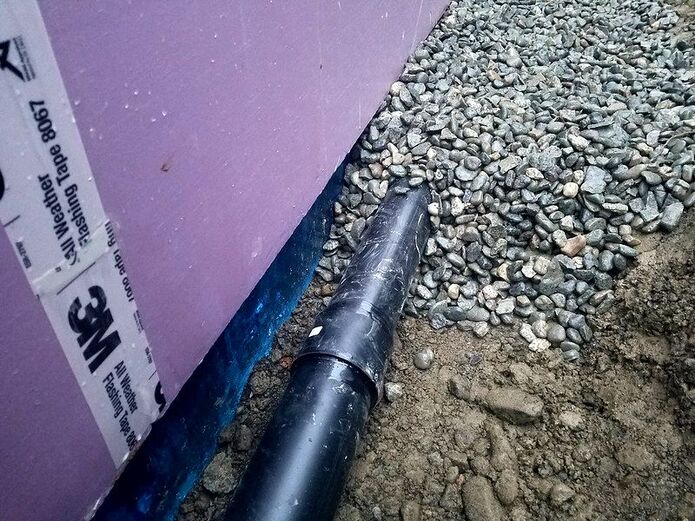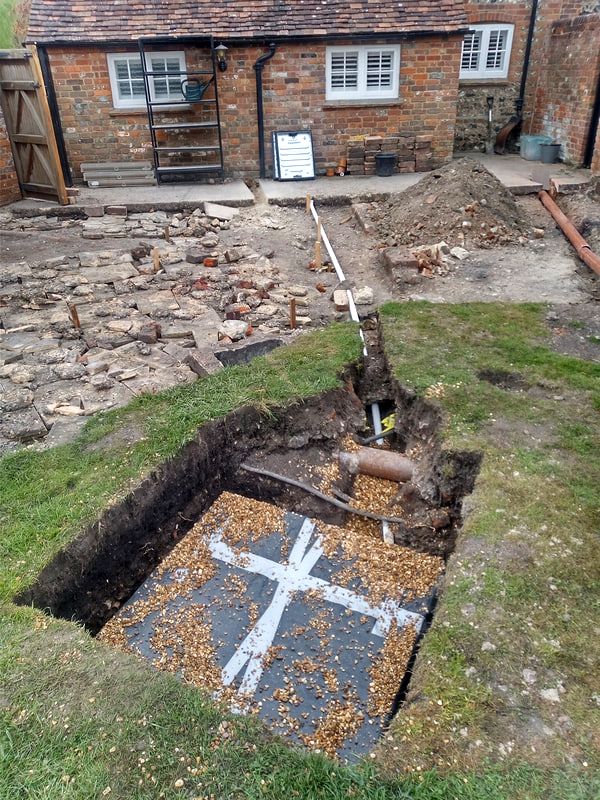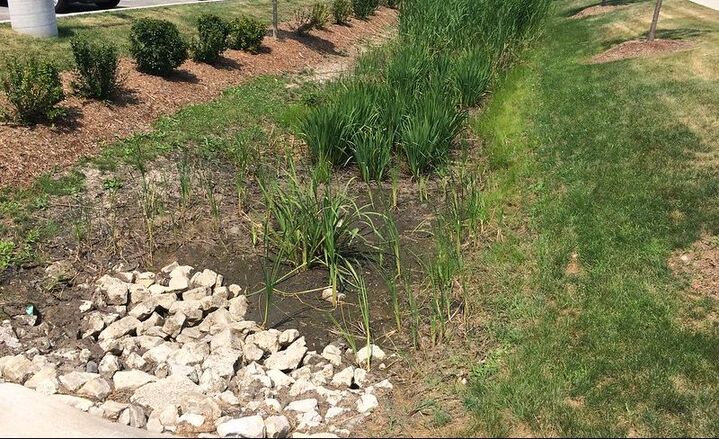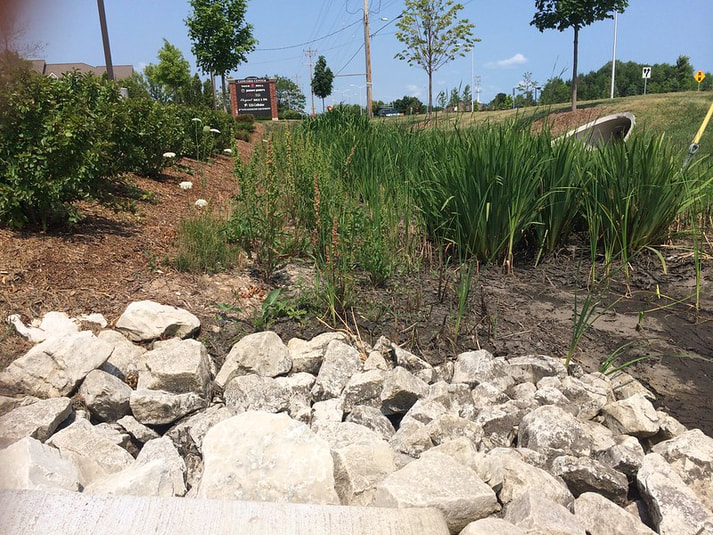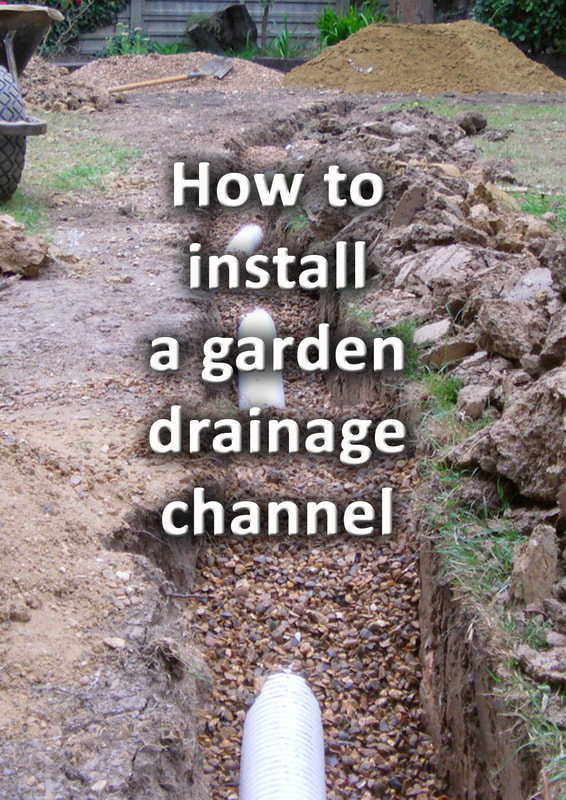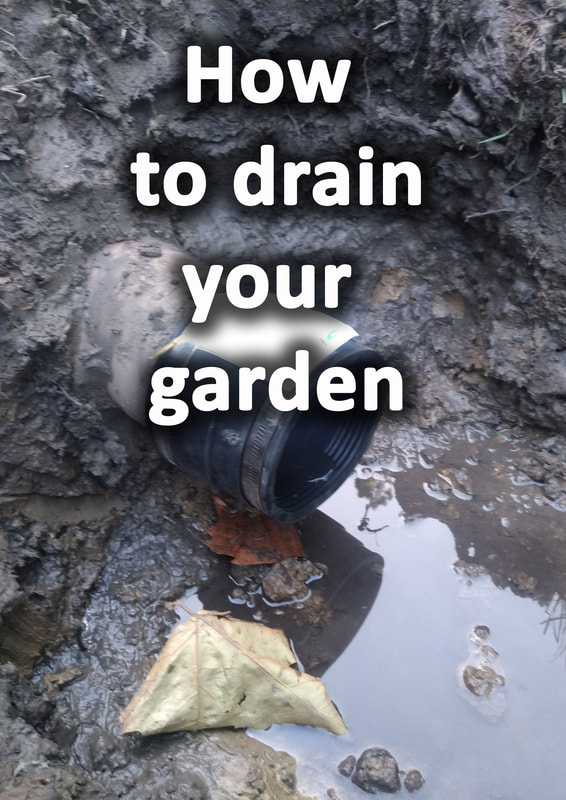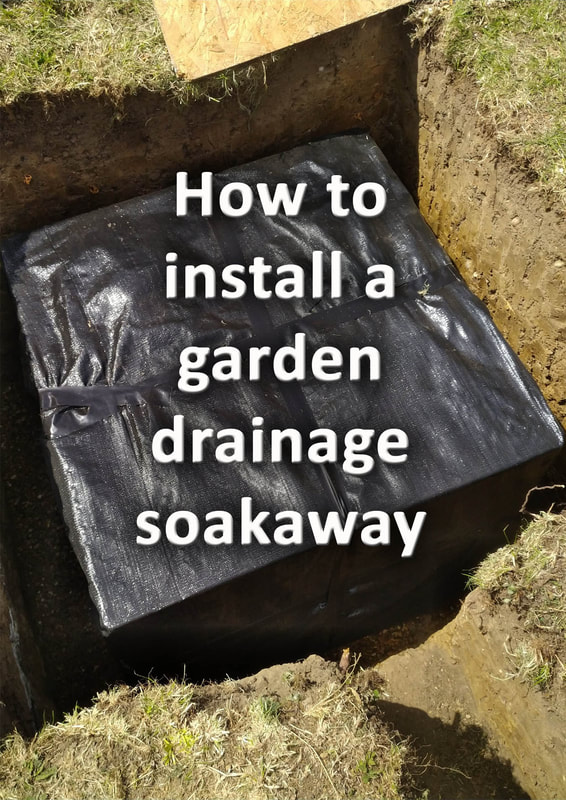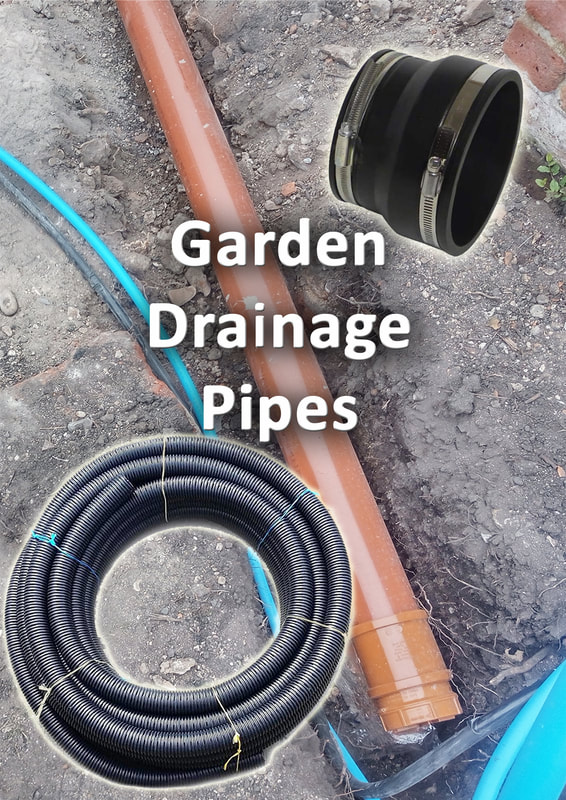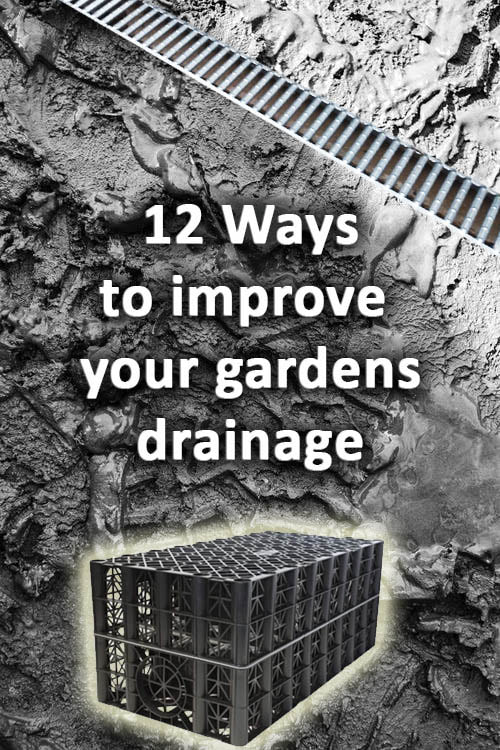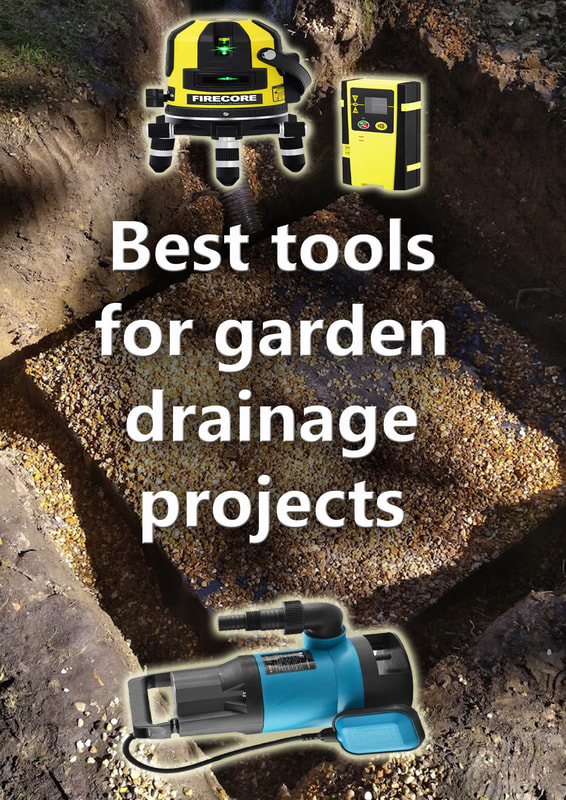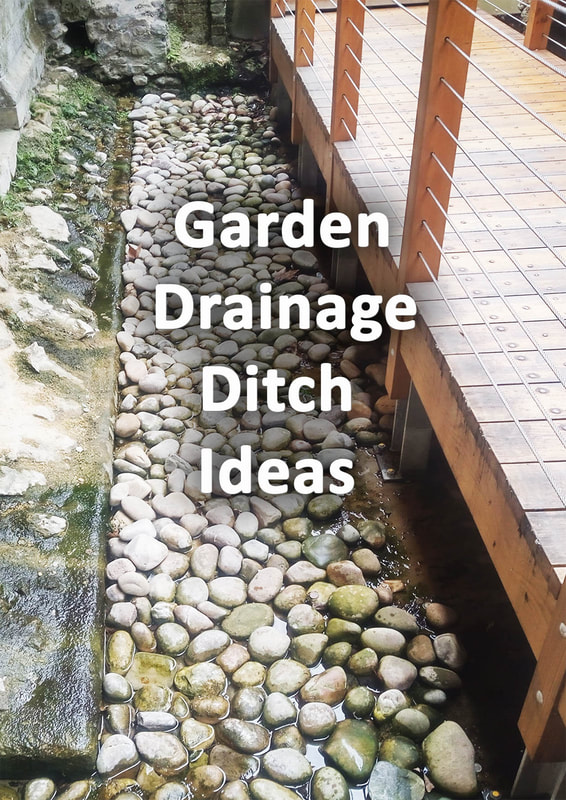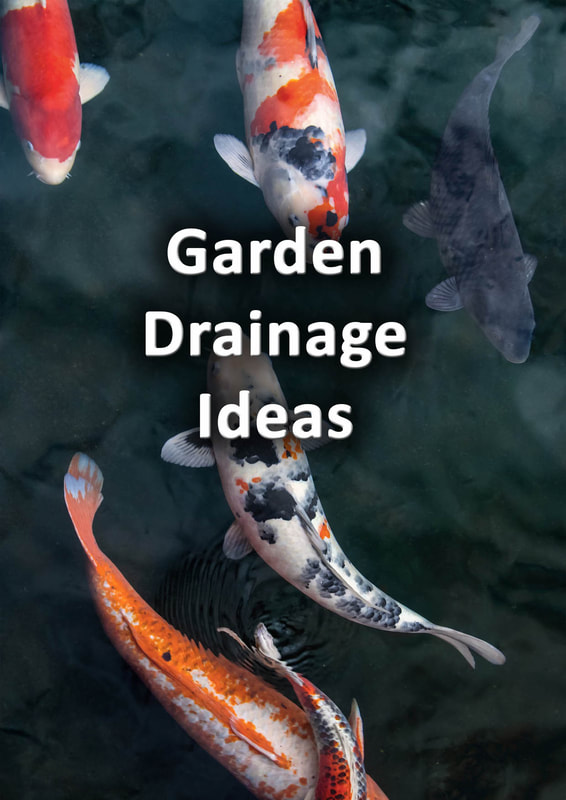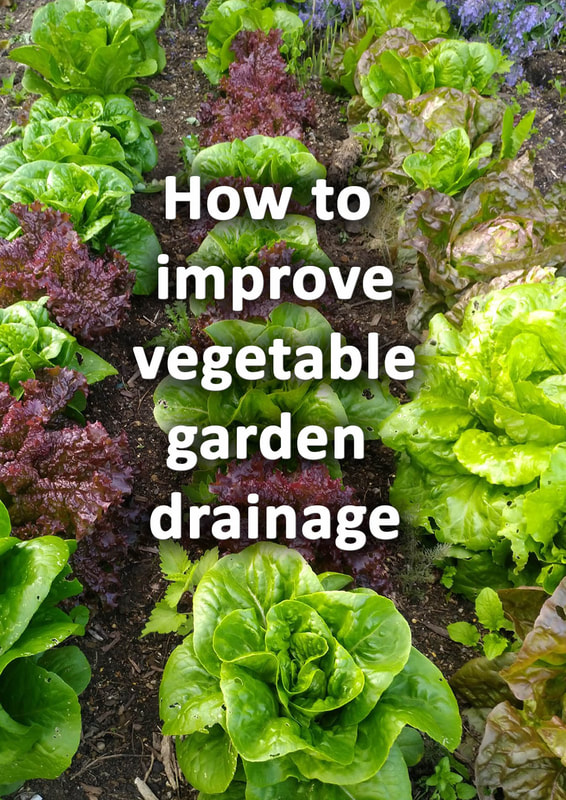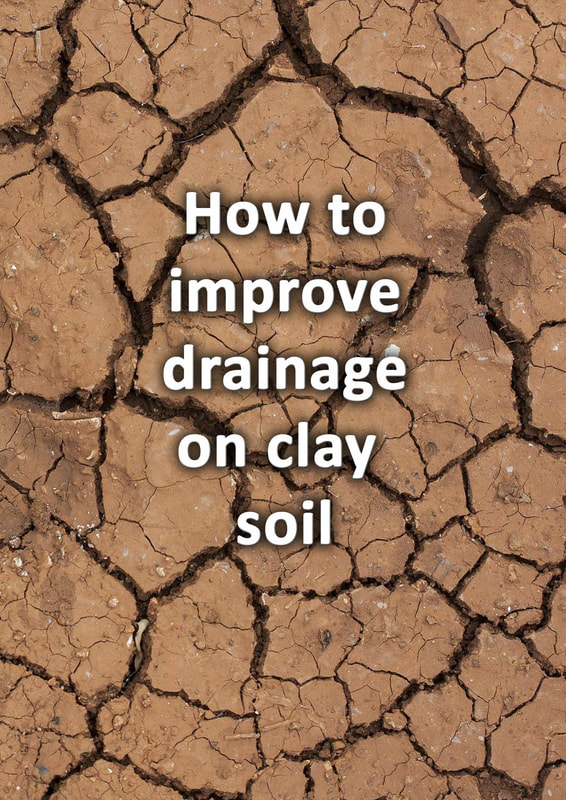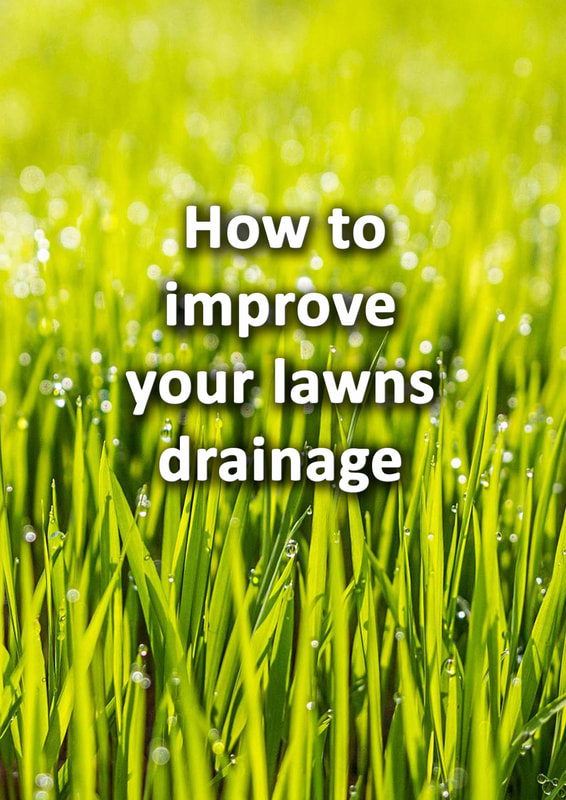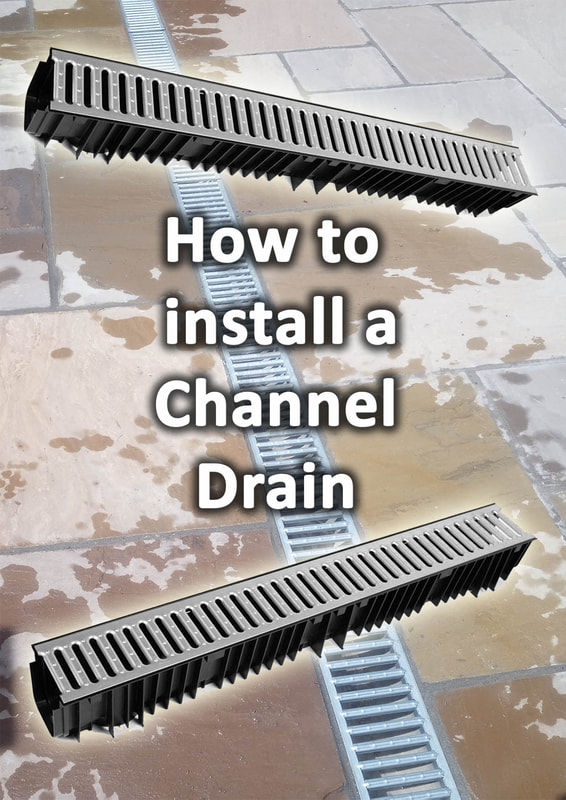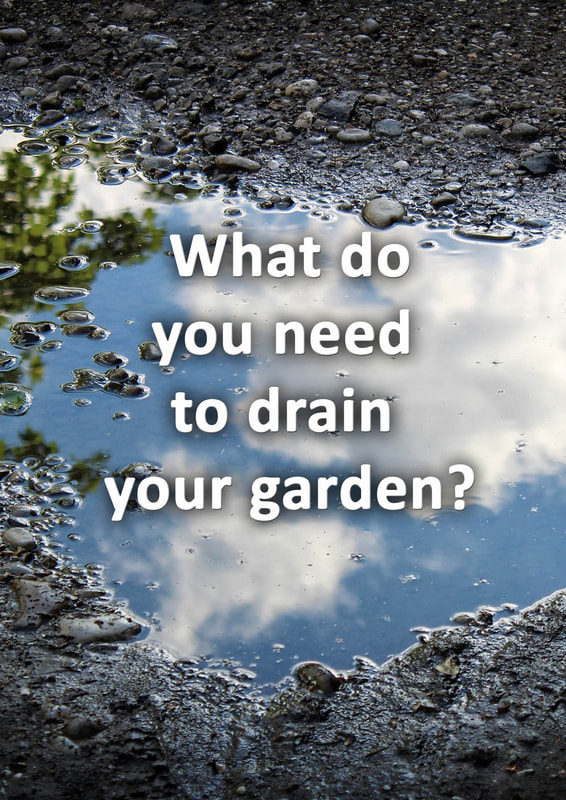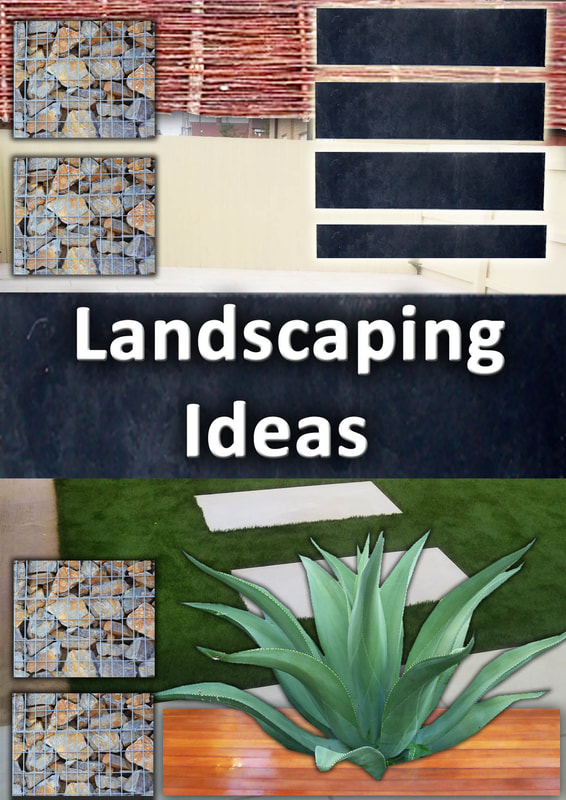|
This article contains affiliate link
Patio drainage systems are not always on the radar when planning a new garden patio. It is very important to plan for where surface water will run in the likely event of heavy rainfall.
This is especially so is you are implementing an area of paving over what was originally soil. Lawns and flower borders have a natural ability to absorb rain water. In contrast patios accelerate surface run off and can contribute to flooding and drainage problems. If new amounts of storm water are sitting against your home you could develop a damp problem. Most modern local authorities do not allow you to direct surface runoff into the drainage network. This is because these networks are becoming frequently overwhelmed with an expansion of urban development. Therefore implementing a patio drainage system properly is extremely important for your project. In this article I will explain everything you need to know for implementing an effective patio drainage system. Planning a patio drainage systemsWhen planning for a new patio considering a drainage strategy is not always the first priority. However planning for patio drainage at this stage will prevent potential drainage problems later. One of the most fundamental considerations is the existing levels of your site. Where does surface water run to in times of heavy rain? Does water fall towards your home? Do you have standing water in times of wet weather or is your ground well drained? At the planning stage of a new patio it is wise to ask the simple question; ‘where will the water go? You will certainly want to avoid trapping surface water against a wall or building! Are you happy with falling the patio onto your grass? This is fine if you already have well drained soil, but if not, you could end up with a boggy lawn. Therefore it is always important to conceive patio drainage from the outset of the project. Assessing existing site hydrology
One of the first steps to working out a patio drainage strategy is understanding your sites hydrology. Do you have existing damp or boggy conditions? Do you have clay soil? If so, you may have to think about a greater drainage strategy to provide excess water somewhere to go. This could be a soakaway or seasonally flooding landscape feature. This will enable you to channel storm water from your paving straight to a holding facility. This will also help to alleviate flooding in softer landscaping areas such as flowerbeds. If you live in a flood risk zone or are close to natural watercourses you could have a high water table. If so it is important to realise that draining your patio into a soakaway may not be effective. In High water table areas soakaways can simply fill to the top through ground saturation.
This can lead into overflowing gulley’s and drainage channels. In such circumstances your local authority may provide permission to pipe storm water off site.
However the most effective way to assess your gardens hydrology is with levels. Try to get an understating of your gardens landform and gradients. This will enable you to gauge where storm water will run in times of heavy rain. Ideally patios should direct surface run-off where it can be naturally absorbed by the ground. Good patio drainage should ensure no water is standing against buildings and is diverted to a natural saturation zone. Impermeable verses permeable paving
Permeable paving is paving which allows water to pass through its surface. This has many benefits such as reducing the velocity of surface run off. Most of the time permeable paving will reduce the need for a patio drainage strategy. However the subject of permeable paving is not as simplistic as many make out. Firstly most permeable paving is simply paving with larger, open, joints filled with free draining aggregate.
These extra large gaps typically fill with dirt and debris and lead to weed establishment. Furthermore the base the paving is laid upon is very rarely fully permeable.
This means such paving can help reduce run off velocity but is technically not permeable. I find this is also the case with resin bound, aggregate, patios. The open textures and gaps of these surfaces normally lead to the build up of dirt. The most ecological drainage solution in my opinion is using impermeable paving with run off channelled into wetland, habitat, features. A well designed patio drainage system can engineer such an outcome very effectively. Patio drainage strategy
The first step to implementing an effective patio drainage strategy is having clear objectives. The basic fundamentals will include how to collect surface water and where it should be directed. If your patio is sloping towards your building you will want to avoid water sitting against your home. Therefore a linear, Acco chamber with removable grates is an effective solution. In such a case these will have to be plumbed into a pipe which transports water to its destination. This is normally a soak away of some description. Ultimately the best destination for surface water is somewhere down hill! This means you will have gravity on your side when getting water away from your patio. Below we discuss the best products and methods for effective patio drainage. These will both collect surface water and transport it to its final destination. Garden drains
Garden drains come in many various forms and sizes. The most typical of these are the square 100mm square chambers. These traditionally accept surface runoff from roofs and gutter systems. In the past most new patio installations would simply plumb straight into these. Drainage chambers with grates such as the typical Acco chambers would collect water and connect directly to the drain. However doing this can actually overwhelm existing soakaways and even public drainage networks.
This can lead to pollutants from surfaces finding their way into natural watercourses. Therefore a new patio should really come with a drainage system plumbed into its own soakaway.
This could also be a retention pond, seasonal flooding wetland or submerged irrigation tank. Most new patios warrant a full assessment of existing drains for blockages and overall condition. Cracked or degraded drains should be reworked with impervious materials and mortar finishes. This is to reduce germs, bad odours and create a neat and professional finish. Sump drain
Patio sump drains are where small drains are installed to the lowest part of surface to collect surface water. Sump drains were typical especially in decades past where concreting was a more popular surfacing material. However today, new patio installations seek to keep the level on a flush and consistent gradient. This is much more clean and professional especially when aiming for a more contemporary look. Sump drains do deserve a mention however they are not typically considered within modern, patio, drainage. Patio gulleys
Patio drainage gulley’s are typically shallow depressions in surfaces which collect and divert surface water. Unlike most drainage installations these can be subtle and even artistic in their execution. The simplest form of drainage gulley is by simply pressing a pipe into mortar to create a depression. If you are using smaller paving units such as setts these can be formed into a linear gulley. Alternatively different materials can be used such as coloured gravels set into mortar or mosaic, tile work. Patio drainage grates
Patio drainage grates and grills are effectively engineered, channel units, which allow storm water to be collected and diverted. They normally come in 1 metre sections and come with either a metal or plastic grill or grate. The most typical use for these is collecting water that would otherwise fall towards a building. If installed well, patio drainage grates can look very effective by adding visual contrast to paving. This is especially so with contemporary schemes using smooth materials such as slate and porcelain. Patio drainage pipes
Most of the time patio drainage pipes facilitate a single function. This is to transport water from a collection point to a destination, normally a soakaway. For the average patio drainage installation a 50mm plastic ground pipe is usually adequate. This also provides you a comfortable circumference to plumb into drainage grills and patio drains. Pipe work can run underneath paving but if running through flower borders, make sure they are set deep enough to avoid damage. For much larger patios above 200 square metres consider plumbing into a larger 110mm diameter ground pipe. If your patio drainage integrates into wider landscape drainage you may also connect to larger sections of 100mm perforated pipe. Patio French drains
French drains consist of excavated drainage channels and backfilled with free draining gravel around a central pipe. The pipe is typically perforated meaning it has many small holes to collect water. Conventionally French drains are effective at draining saturated ground of excess water. This is especially so on soils which soak up and retain moisture like clay. French drains can integrate with patio drainage systems and work apart of a greater landscape drainage strategy. However if you have the opposite problem of a garden being too well drained they can also benefit. Patio drainage systems can discharge straight into French drains which travel under flower borders. This can act as an irrigation channel and help to saturate dry planting areas. Soakaway installation for patios
Most of the time new patios will need a soakaway to deal with surface run off. This is especially the case if a proposed patio is replacing soft landscaping such as lawns and borders. The most common scenario for patio drainage soakaways is the patio is laid to a slight fall. The fall gently allows surface water to flow into linear drainage channels with grates. Normally a 50mm ground pipe with a 90 degree pipe elbow is connected to under the lowest drainage grate. This will then connect to a ground pipe which feeds the soakaway.
The soakaway is normally located downhill or in an area of soft landscaping such as a lawn. It is a common practice to avoid installing soakaways 5 metres from a building or boundary.
The best soakaways for patio drainage systems are plastic drainage crates. These typically come in 400x500x1000mm sections 4 of which can be attached to create a 1 metre cube. This is then wrapped in filtration membrane and buried deeply into the ground. Patio drainage systems can then be piped straight into the soakaway. These are able to collect and hold large amounts of storm water in times of heavy rainfall. Bioswales
A bioswale is a vegetated, linear, landscape, depression which is designed to channel and absorb storm water. Bioswales unlike standard swales and ditches clean polluted runoff water by filtering it through wetland plants. Plant roots and microorganisms help to break down pollutants and allow water to be cleaned ecologically. This allows the water to pass back into the hydraulic cycle gradually and safely. The added benefit of bioswales is they actually provide great natural habits for wildlife. This is especially so for reptiles, amphibians and birds. In a garden context patios can drain directly into a bioswale system which can be planted with wetland plants. If designed well these can become decorative garden features and great for wildlife! Seasonal flooding wetlands
Seasonal flooding wetlands are an ecological drainage feature and very similar to bio swales. These are simply pond like depressions which fill up seasonally or in times of heavy rain. Similar to soakaways they can hold large quantities of water and allow it to be slowly reabsorbed by the landscape. Seasonal flooding wetlands are actually a rare habitat which was once common. A combination of urban development and modern farming has led to them now being rare. There are a number of small creatures which rely on such habitats to complete their lifecycles. If you are passionate about conservation perhaps your patio could drain into such a habitat feature. Retention ponds
Retention ponds are basically garden ponds which are designed to accept excess drainage water. This could be from land drainage systems as well as guttering and patio drainage. These can be wildlife ponds which have high, sloping, sides which can fill up in times of heavy rain. Retention ponds can also be more formal ponds which can be connected to garden irrigation systems in summer. Instead of plumbing patio drainage into a soakaway why not store the water in a retention pond instead? Garden drainage services & drainage contractors in Buckinghamshire
Buckinghamshire landscape gardeners are experts in garden drainage and provide a number of garden drainage solutions. Our garden drainage services include;
Our garden drainage services cover most of Buckinghamshire including:
Thank you for reading our article on patio drainage systems. If you found it useful why not share it via social media? We have included some extra related articles which you may also find useful below. Thank you!
How to fit a paving drainage system | Outdoor & Garden | B&Q (diy.com)
Expert Patio Drainage Advice and Solutions - Coastal Drains Drainage for your patio (aco.co.uk)
'As an Amazon associate I earn from qualifying purchases'
1 Comment
11/10/2022 11:38:47 pm
We appreciate your comment that considering patio drainage now can help avoid potential drainage issues in the future. My husband claimed he wanted to prevent floods in our home. I'll give him a recommendation for a drainage system repair company so he can achieve efficient rate flow regulation.
Reply
Leave a Reply. |
The Author
|
Landscaping services across Buckinghamshire, Amersham, Aylesbury & High Wycombe
Hyde Heath, Amersham, Buckinghamshire |
|

